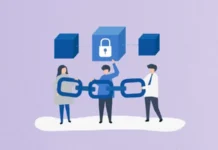The Internet has become an indispensable part of daily life for almost everyone. And fiber has ensured that most of the population can access it in good conditions. However, satellite connection continues to be an option for some of those residing in some countries, and sometimes the only one.
Specifically for the residents of remote rural towns with few populations where the fiber does not reach. The main advantage of satellite internet is coverage because you can connect from practically anywhere, even in those areas where we cannot reach in any other way, indicates José Antonio Morán, director of the Telecommunications Technologies and Services Engineering degree. of the Open University of Catalonia (UOC).
As Moran explains, the satellite is nothing more than a communication node that allows elements that are at distant points to communicate. As new interconnection technologies have appeared, especially since the advent of the Internet, satellite has increasingly fallen out of use. But, in those points where what was formerly cable ADSL and what today is mostly fiber optic does not reach, satellite internet is one of the main options to bring the Internet to homes. It is in the highly populated nuclei where there is no need because normally, the deployments have already been made to install the fiber since there is a significant economic return. But, when the cost of the investment does not compensate, taking into account the number of possible users, the fiber costs to reach some rural areas. These are the ones we commonly call blind zones, which are communication zones outside the wired network”, explains the UOC professor.
Although these areas outside the wired network are fewer and fewer, they exist. As indicated by the latest broadband coverage report from the Secretary of State for Telecommunications and Digital Infrastructures, with data from 2022, 9 out of 10 homes and companies in the territory have access to fixed broadband networks of at least 100 Mbps. However, in rural areas, the figures are reduced to 7 out of 10. And, in populations of less than 500 inhabitants, they are generally below a penetration of 50 % coverage.
It was the reason that last May, the Ministry of Economic Affairs and Digital Transformation awarded Hispasat aid from the UNICO Rural Demand program, which guarantees a flat rate for a fast broadband connection via satellite of at least 100 Mbps and for 35 euros per month for users in those rural and remote areas where there is no access to networks of at least 50 Mbps.
How does it work
Satellites orbit the Earth and are used as telecommunication elements: a wave is sent from the Earth to the satellite, which it processes and sends back to another terrestrial area. “Since we do not have a direct line of sight due to the curvature of the Earth, we cannot make a direct transmission between distant areas after certain kilometers because there is no direct line of sight between the antennas. One possibility when we do not have other cheaper alternatives such as fiber is to use these telecommunication devices that we have in orbit to make long-distance transmissions”, points out Jose Antonio Moran.
Initially, it was used mainly in systems such as the first television services received from other countries, from where satellites were used to deliver the signal. But, with the arrival of the Internet, it also began to provide connectivity to surf the web.
Advantages and disadvantages
Satellite is not the only option for areas outside the wired network to have coverage. WiMAX or LTE and mobile or fixed line networks via microwave links are other possibilities. However, these are usually limited to relatively short distances. According to experts, the satellite connection is the most economical and simple when the fiber does not reach the place. The only thing required is electricity to power the reception antenna, which is focused toward the point of the satellite that will act as a bridge, and from there, the data transmissions are carried out. Therefore, the only cost is the installation of the antenna. “Coverage is almost 100% as long as you have a direct view of the sky, although some factors can affect the quality and availability of the connection in specific areas, such as geographic location, obstruction of the line of sight to the satellite (for example, tall buildings or dense trees) and adverse weather conditions,” says Jose Antonio Moran.
It also has its drawbacks. The main one is that it does not usually reach the transmission speeds that fiber optics allow, which is currently the benchmark for quality in telecommunication signal transmission. In other words, it offers connectivity, but not high-speed connectivity like fiber optics. That is why the latency may not be enough, for example, for a collaborative video game. “When we use applications very close to real-time, we need a very low latency time that allows information to be sent quickly with an equally fast response. Suppose you are playing a game where you have to finish off your opponents, and the latency is high by the time you turn around. In that case, the opponent has already eliminated you”, explains the UOC professor.
The reason is that the signal must travel the 36,000 kilometers that separate the Earth from the geostationary satellites, and that implies a delay from when the signal is sent until the server processes the signal remotely and returns it. This is not a problem for Internet browsing since this delay can range between 500 and 800 milliseconds. Still, real-time applications such as online games require fast interaction between users or video calls, which will also have some lag. It would also not allow other applications where speeds close to real-time are necessary.
In addition, inclement weather may influence the service in any long-distance transmission of electromagnetic waves. For this reason, in adverse weather conditions, there may be small cuts, or the quality of the service may drop, something that does not happen with fiber optics, in which the wave goes at full speed through a closed tube that does not have any external interference. «Unless the fiber breaks, our quality is always the same because it is in a very protected environment. That is why such high transmission speeds are achieved,” says Morán.
Other uses of satellites
In addition to internet connectivity in remote areas and the transmission of television and radio signals over long distances, satellites have other uses. Among them is the observation of the Earth, since they can provide useful information for weather forecasts, or GPS, “which is the use of satellite systems par excellence. We all carry a GPS receiver in our mobile, with which we can locate ourselves thanks to satellites”, says the UOC professor.
Another use, although not domestic, is that they can play a good role as systems that guarantee the signal: in the event of failure of other telecommunication systems, satellites play a crucial role as a backup and alternative to maintain connectivity and communications. They provide reliable connectivity in emergencies, remote areas, and in military, government, and navigation applications. “Their global coverage capacity and independence from terrestrial infrastructure make them a valuable option for maintaining communications in various circumstances,” explains Jose Antonio Moran.
Also Read: What is the Internet of Things?














